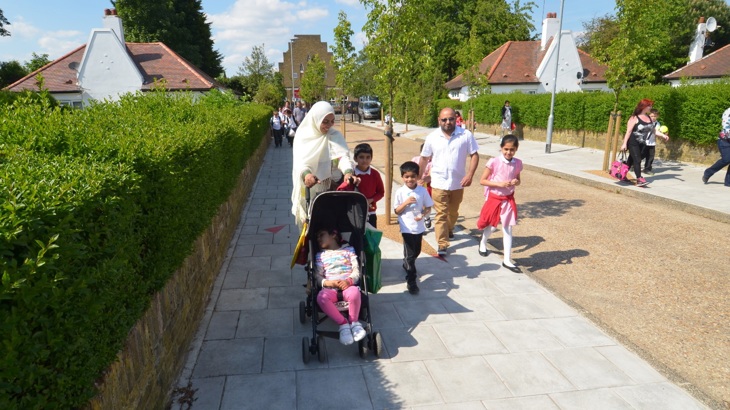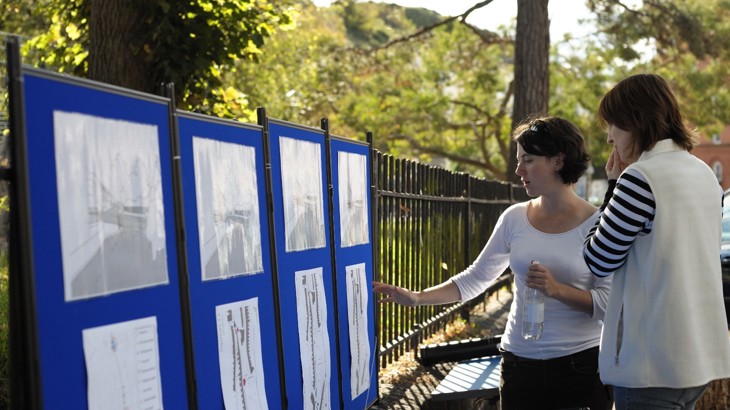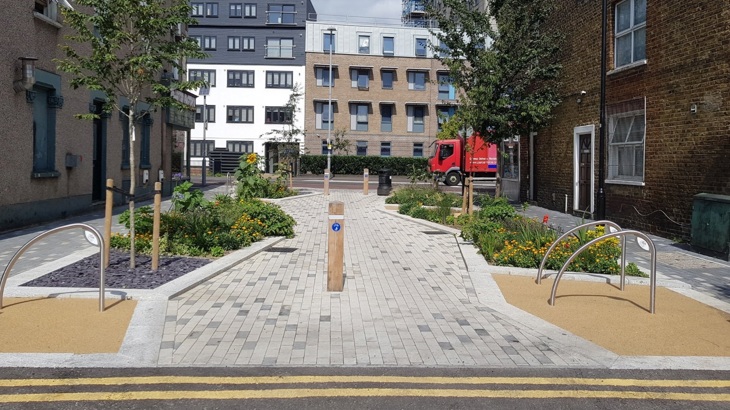The term ‘low traffic neighbourhood’ is making its way into the mainstream. But what exactly is a low traffic neighbourhood (LTN)? And how will it make our towns and cities better places to be?

The government has increased spending on making it easier for people to walk and cycle in response to the Covid-19 pandemic.
The government has increased spending on making it easier for people to walk and cycle in response to the Covid-19 pandemic. As a result, we’re seeing a range of changes made to our streets.
These changes include things such as cycle lanes, wider pavements and planters on roads that reduce the number of motor vehicles using the streets.
Reshaping residential areas to make streets safer and more appealing to walk and cycle is part of creating a ‘low traffic neighbourhood’.
These are also sometimes referred to as ‘liveable neighbourhoods’ or ‘active neighbourhoods’.
But what exactly is a low traffic neighbourhood and what does it mean for you?
What is a low traffic neighbourhood?
A low traffic neighbourhood (LTN) is a scheme where motor vehicle traffic in residential streets is greatly reduced.
This is done by minimising the amount of traffic that comes from vehicles using the streets to get to another destination. This is often referred to as ‘through-traffic’ or ‘rat-running’.
Private motorised vehicles still have easy access to all homes and businesses without driving directly through the neighbourhood.
This opens up networks of streets so people can safely travel through the area on foot, bicycle, by wheeling or by bus. Emergency vehicles can also be prioritised to reach their destinations quicker.
Traffic is reduced by using temporary or permanent barriers called “modal filters”.
These can include putting up bollards or planters. Or they can be camera operated.
Residents and businesses still have access to the neighbourhood by motor vehicle using different routes, but through-traffic is greatly reduced.

A low traffic neighbourhood (LTN) is a scheme where motor vehicle traffic in residential streets is greatly reduced.
What is the aim of a low traffic neighbourhood?
The overall aim of low traffic neighbourhoods is to reduce motor traffic, and in doing so, reduce air pollution, noise pollution and road accidents.
Low traffic neighbourhoods aim to make the character of residential streets more pleasant, inclusive and safer for people to walk and cycle.
They can also create spaces to play and to socialise. And they help connect people to local amenities, benefiting them and businesses.
Making space on our streets is key to achieving cleaner air and a lower carbon footprint whilst building healthier, safer and more resilient communities.
The pandemic brought this into sharp focus and created an urgent need to quickly change the way we live and move around.
The UK Government has invested £2 billion in making it safer for people to walk, cycle or wheel for essential trips and exercise during Covid-19.
And that’s why we’re seeing more low traffic neighbourhoods appear in our cities and towns.

Low traffic neighbourhoods aim to make the character of residential streets more pleasant, inclusive and safer for people to walk and cycle.
What are the benefits of low traffic neighbourhoods?
Low traffic neighbourhoods have shown to:
- increase physical activity through more walking and cycling
- benefit local businesses through an increase in sales and higher spend in people who walk or cycle to a high street
- create new public space
- improve air quality
- lower car-use for shorter trips
- increase social interactions between neighbours and strengthen communities.
A survey of 345 residents from low traffic neighbourhoods in London found that 63% either agree or strongly agree that it has improved their lives as Londoners. Compared with 14% who say it hasn’t. A further 22% neither agree nor disagree.
What do residents think of trial modal filters in St Denys?
Is it legal to block residential streets to cars?
Yes.
Residents are still able to access their property by car, as will visitors, deliveries from outside the area and service vehicles such as waste collection trucks.
But their routes may need to change. The aim is to reduce through-traffic, not remove all traffic.
How is a low traffic neighbourhood made?
The design is then decided based on what will have the greatest impact on the neighbourhood, rather than where it will be easiest to implement.
For example, streets that have:
- poorest air quality
- highest deprivation
- poor access to green space
- highest traffic volumes, particularly percentage of through traffic
- a high density of collisions, particularly for the most vulnerable users
- the greatest number of schools
- low public transport accessibility
- low car ownership
- highest childhood obesity
Once the design is determined, the low traffic neighbourhood is created and trialled so that the difference it makes can be monitored over a period of time.

When designing a low traffic neighbourhood, local residents and stakeholders are invited to discuss and agree on how their sheets should be used.
What things make up a low traffic neighbourhood?
Modal filters
A bollard or planter that stops motor vehicles accessing a particular street.
Pocket parks
These are two sets of filters, spaced slightly apart to create a new area that cannot be accessed by motor traffic.
Bicycles, wheelchairs and scooters can pass through these areas.
Diagonal filters
Bollards or planters placed diagonally through a cross-roads.
These minimise the need for reversing, and they make it easier for bin and recycling collection or other large vehicles to manoeuvre.
Bus gate
A modal filter which buses and emergency vehicles can travel through. This is usually camera-operated.
Banned turns
This stops motorised vehicles turning certain ways in residential areas which slows the flow of traffic.
One-way streets
Streets that only allow traffic in one direction. These can be effective in combination with banned turns.

These are two sets of filters, spaced slightly apart to create a new area that cannot be accessed by motor traffic.
Are the roadblocks and restrictions permanent?
Low traffic neighbourhoods are not a new feature in our towns and cities.
One of the first in the UK, De Beauvoir Square in Hackney, was created in the early 1970s to make residential streets safer for children.
But more recently, they are being delivered in response to Covid-19 so that we have more space to safely socially distance.
Some of the changes follow months of public engagement which started prior to Covid-19 but were brought forward as part of the Government’s response.
Other proposals for temporary low traffic neighbourhoods had to be submitted, designed and delivered quickly. This meant that public consultation couldn’t take place.
The good thing about these temporary measures is that they are being introduced on a trial basis.
That means that residents are able to see them in action and provide feedback before deciding on whether changes are needed or if they should be made permanent.
Want to start cycling more? Take a look at our beginner's guide to cycling.





